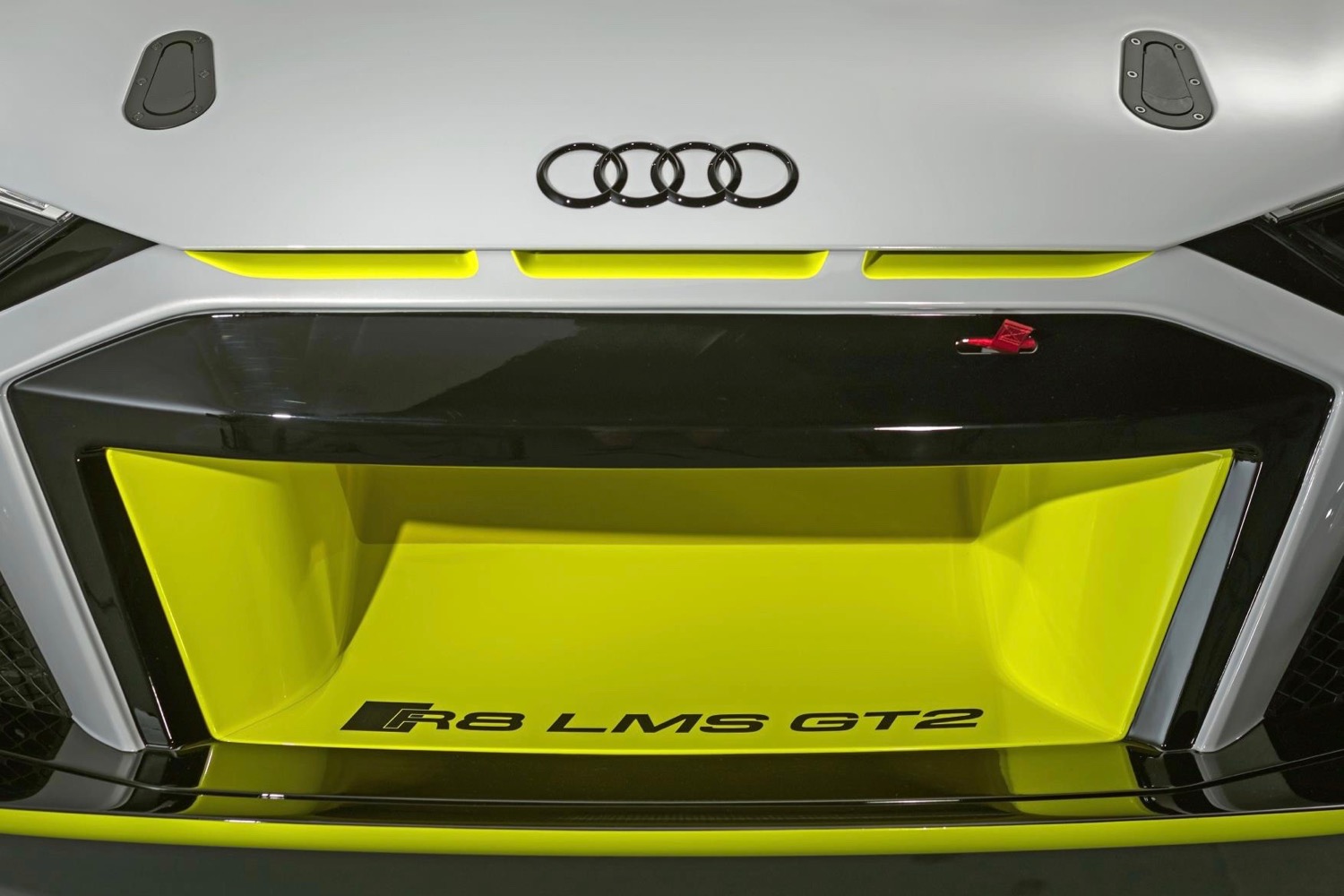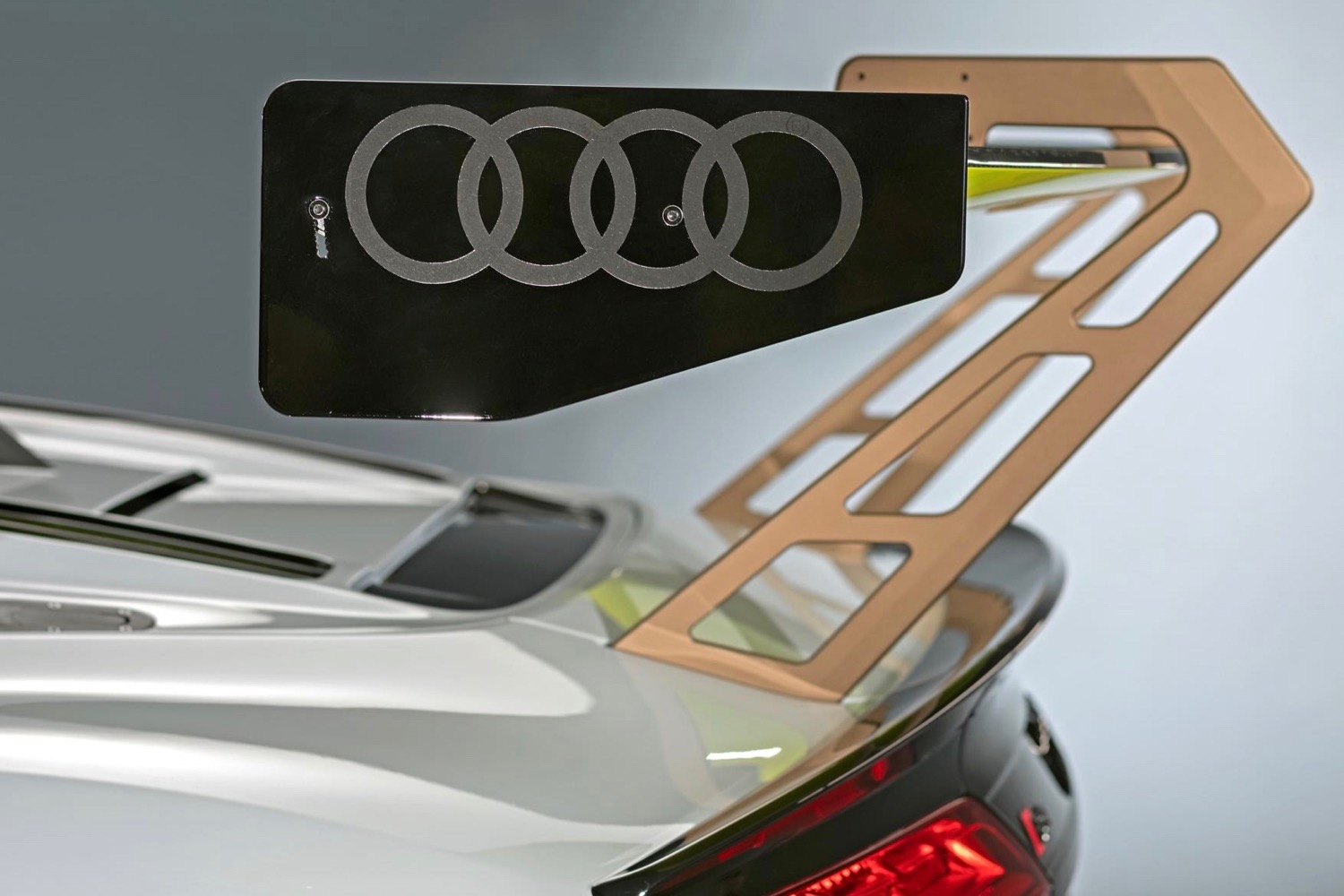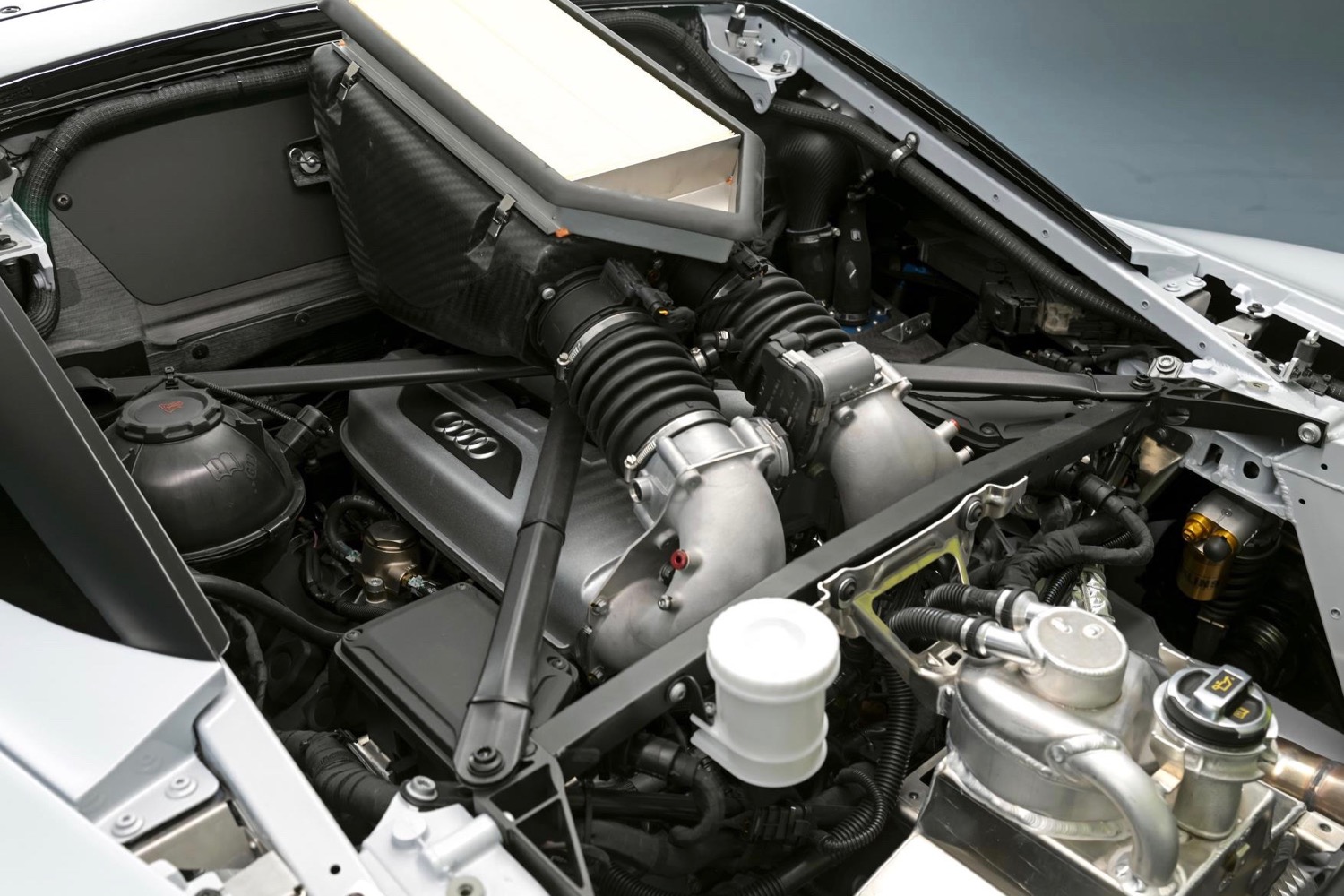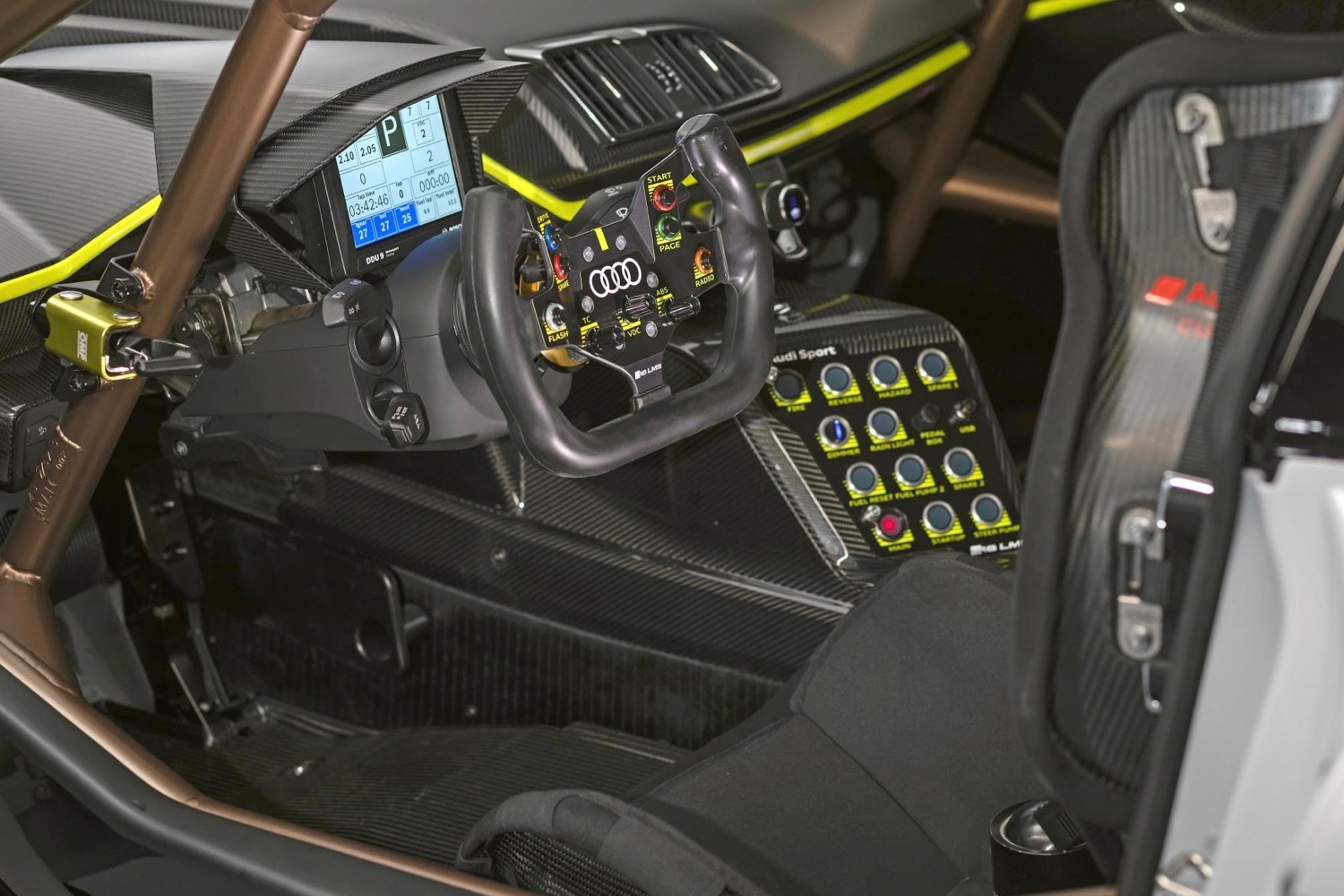Audi does a brisk business selling racing versions of its road cars, and the automaker just unveiled its most powerful racer yet. With 640 horsepower on tap, Audi claims the R8 LMS GT2 will offer more power than any other race car it has sold to customers. The R8 LMS GT2 made its public debut at the 2019 Goodwood Festival of Speed, and Audi expects it to be eligible to compete in multiple race series in 2020.
Aside from the headline horsepower figure (which is 38 hp more than the most powerful road-going R8), Audi was light on details. The LMS GT2 will presumably use the same 5.2-liter V10 as the R8 road car and other racing versions of the R8. Photos released by Audi show typical racing modifications, including more aggressive aerodynamic elements and a stripped-out interior with a very complicated-looking steering wheel.
The R8 LMS GT2 was designed to compete in a new racing class called, not surprisingly, GT2. Created for modified production cars, it will fill a gap between the existing GT3 and GT4 classes, according to Audi. Racing fans will remember that GT2 was the name used for the top level of production-based cars in international racing during the 1990s and early 2000s, featuring manufacturer-backed teams with professional drivers. The new incarnation of GT2 will have a different focus.
GT2 cars will be built with amateur racers in mind, specifically wealthy enthusiasts willing to buy a seat at a race or just looking for a fun track toy. These so-called “gentleman drivers” (when it comes to gender equality, the racing world has a lot of catching up to do) are an important part of the racing industry, and have become a lucrative source of revenue for automakers like Audi. In addition to the R8 LMS GT2, Audi has GT3 and GT4 racing versions of the R8, as well as a racing RS3 that competes in the TCR class. These are all considered “customer racing” cars, meaning they’re sold to individual buyers or teams, rather than being fielded by Audi itself.
If you’ve always wanted your own race car, and have lots of cash to burn, Audi is taking orders for the R8 LMS GT2 at a price of 338,000 euros ($379,000). Deliveries begin in December, and Audi expects the car to qualify for race series’ in North America and Europe beginning in 2020.












